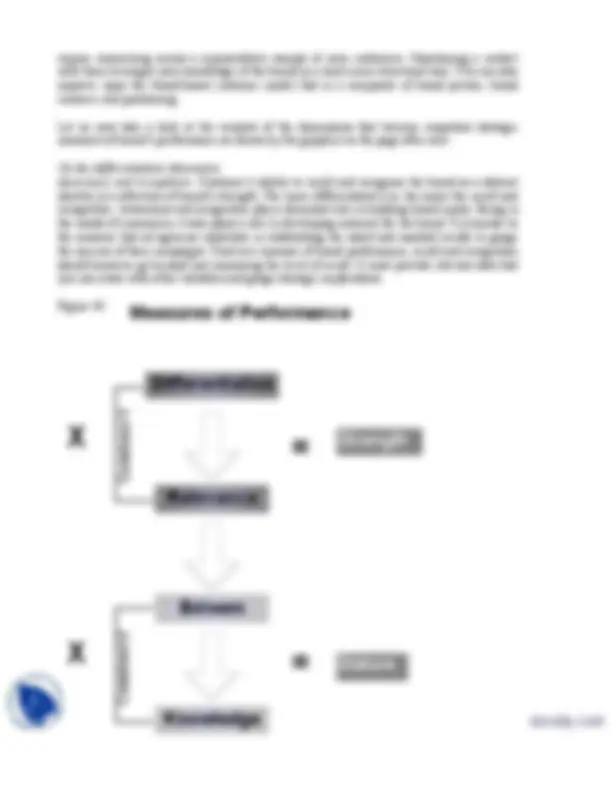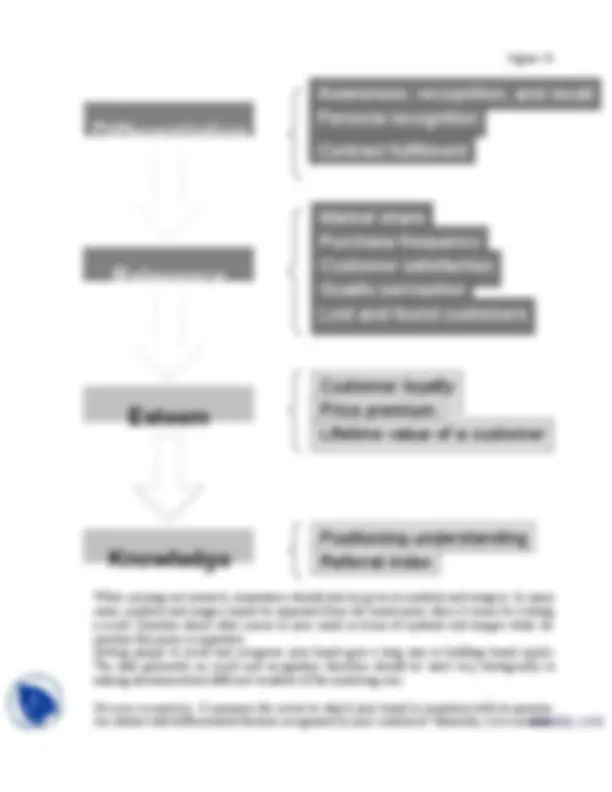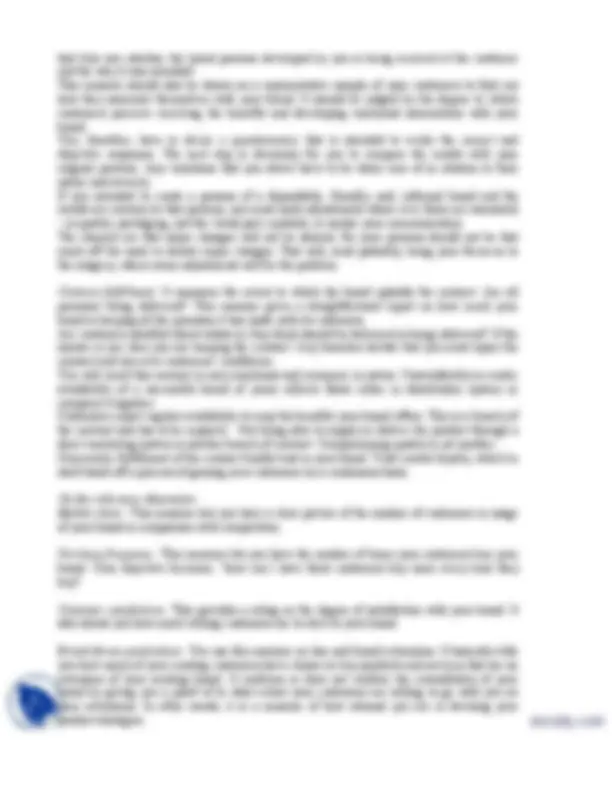





Study with the several resources on Docsity

Earn points by helping other students or get them with a premium plan


Prepare for your exams
Study with the several resources on Docsity

Earn points to download
Earn points by helping other students or get them with a premium plan
Community
Ask the community for help and clear up your study doubts
Discover the best universities in your country according to Docsity users
Free resources
Download our free guides on studying techniques, anxiety management strategies, and thesis advice from Docsity tutors
This lecture handout is for Brand Management. It was designed and distributed by Prof. Nirmohi Jonnalagadda at KLE University. Its main points are: Return, Brand, Investment, Financial, Managment, introduction, Performance, Measure, Dynamics, Result, Customer, Price, Value
Typology: Exercises
1 / 6

This page cannot be seen from the preview
Don't miss anything!




Lesson 39 RETURN ON BRAND INVESTMENT – ROBI Introduction All strategic moves are made according to a game plan that we have learnt through different stages of the brand management process. From brand picture to positioning to channels to communication are all strategic formulations that require investment. If these formulations are put right, the result you get is brand value and profitability. To what extent the strategies in place are giving return on brand investment should be measured so that you can make adjustments in your strategic moves whenever and wherever those are required. The lecture throws light on that! Return on brand investment – ROBI The basic idea of ROBI is to measure brand’s performance. To manage your brand well, you have got to measure its movement in terms of changing preferences and loyalties. The most important challenge here is to see that loyalty to the brand does not erode, for it is one basic measure of keeping your customers, bringing in new ones, and keeping them loyal as well. There are different measures that are employed to gauge the strategic movement and growth of your brand. Such measures allow insights into the following factors or formulations that organizations have in place to ensure growth of their brands:
According to this model brands are built sequentially according to the four factors as shown in the graphic illustration. Differentiation comes first, as no brand with ambitions can become strong unless it has a point of real differentiation. It is the bottom line characteristic of any brand that seeks to acquire price premium or a decent price with good margins. Relevance is next on the model. It means that a brand must have clear meaning for its users. Unless it is relevant for the target market, it will not buy it, despite being much differentiated. Very expensive professional cameras and chronograph wrist watches are much differentiated, but they have an appeal for a niche market and not a large target market. Therefore, they are no good for a common customer. If a brand has differentiation and is highly relevant for a big market, it becomes a big seller and, hence very strong. Brand strength, then, is a function of differentiation and relevance. We can say that Brand strength = Differentiation multiplied by relevance We must try for our brands to become strong on both characteristics, which offer one “construct” of brand strength. The other “construct” comprises of the other two dimensions that are esteem and knowledge. Esteem multiplied by knowledge is the brand stature construct. See the graphics on the following page. Esteem refers to perceived quality and a rise or decline in popularity. Customers loyal to their brands hold them in high esteem owing to the quality perceptions. Esteem then has a direct relationship with loyalty. Knowledge illustrates that customers are not only aware of the brand and its product, but also understand the reason for this product’s existence. They are aware of the positioning of it and have a true understanding of the brand. That is the height of the brand building process. The four dimensions have further variants. You study their variants within the two major constructs and choose which ones are most relevant for measuring performance of your brand. In other words, the performance and subtle changes that are caused over time stem from these dimensions. Starting with awareness, recognition, and recall, these dimensions end with referral index. As a reminder, these measures are carried out along side routine financial results to complete a balanced brand-building process. One important beginning about these measures is that they
Source: Building Strong Brands by David A. Aaker Figure 43
Figure 45 While carrying out research, importance should also be given to symbols and imagery. In many cases, symbols and images cannot be separated from the brand name when it comes to evoking a recall. Question about what comes to your mind in terms of symbols and images while we mention this name is important. Getting people to recall and recognize your brand goes a long way in building brand equity. The data generated on recall and recognition therefore should be used very strategically in making decisions about different variables of the marketing mix. Persona recognition: It measures the extent to which your brand is consistent with its persona. Are distinct and differentiated features recognized by your customers? Basically, it is a measure Awareness, recognition, and recall Persona recognition Contract fulfillment Market share Purchase frequency Customer satisfaction Quality perception Lost and found customers Customer loyalty Price premium Lifetime value of a customer Positioning understanding Referral index Differentiation Knowledge Relevance Esteem
that tells you whether the brand persona developed by you is being received at the customer end the way it was intended! This measure should also be drawn on a representative sample of your customers to find out how they associate themselves with your brand. It should be judged by the degree to which customers perceive receiving the benefits and developing emotional associations with your brand. You, therefore, have to devise a questionnaire that is intended to evoke the correct and objective responses. The next step is obviously for you to compare the results with your original persona. Any variations that you detect have to be taken care of in relation to their nature and severity. If you intended to create a persona of a dependable, friendly, and, informal brand and the results are contrary to that persona, you must make adjustments where ever those are warranted